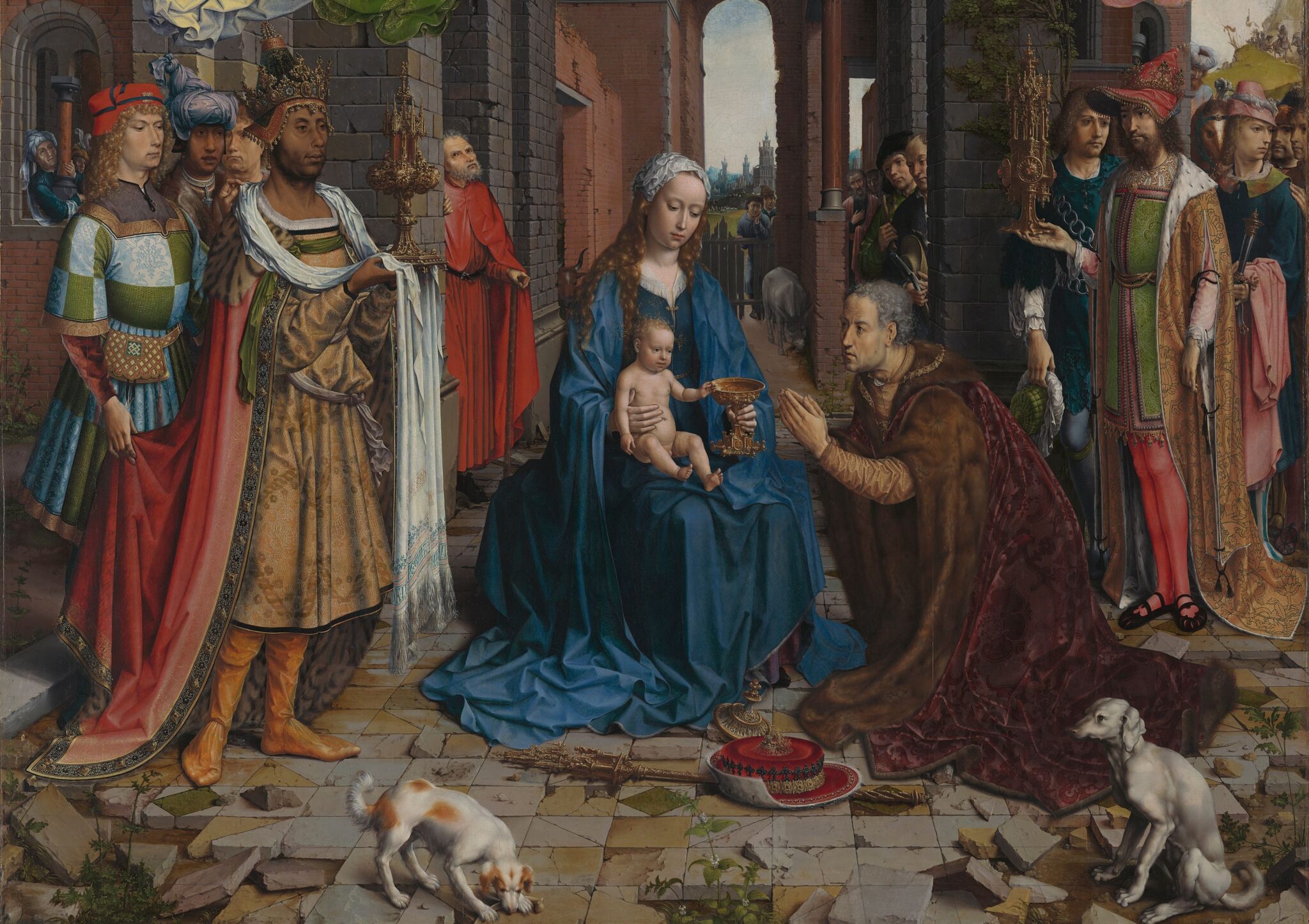Some paintings never cease to amaze. They offer more and more as you give them time to. Just such a picture is Jan Gossaert’s <em>Adoration of the Magi</em> in the National Gallery, made in the Netherlands more than five centuries ago, but so well preserved and pristine that it could have been finished this morning. In a ruined roofless building on a broken-up stone terrace, animals, angels and richly-robed kings gather to pay homage to the Infant Christ enthroned on the lap of His Virgin Mother.
At the apex of the composition is the brilliant star marking the spot where the Saviour was to be found, in Bethlehem in Judea. Every square centimetre of the panel is highly wrought with fine colours and refined brushwork; every detail is rendered in sharp focus.
Allow me to point out just three of these details. Let’s start with the black king Balthazar’s magnificent headgear: a crown of gold and silver of intricate foliate design and adorned with rubies and pearls sits on a peaked cap of stiff fabric, richly embroidered and topped with a pearl- and ruby-laden finial. On the edge of the cap, embroidered in gold letters, are the artist’s name, IENNI GOSSART: DE MABV (he was known as Mabuse, as he came from the town of Maubeuge, now in northern France), and at the top, the king’s: BALTAZAR.
Second, on the capital that tops the polished jasper column above the kneeling magus, is a small relief carving of the Sacrifice of Isaac. Abraham’s hand is stopped by an angel as he is about to kill his son; a ram appears to the right to be offered up instead. When Gossaert painted this work, the offering of Isaac in Genesis had long been interpreted as a foreshadowing of the sacrifice of Christ. And third, to the left of the Virgin and above the ox’s head, nestling behind the opening in the brick wall with his face in shadow, is a reticent angel in a green robe. The tip of his wing is just visible above his head. It is sometimes said to be a possible self-portrait of the artist, but I doubt it.
The arrival of the Child, says Gossaert, splits time in two. The ruined palace signifies the past; the singing angels and the luminous sky, a new future. The naked Child, like every child, a new beginning. The heavens declare a new revelation of divine love to all the world. The wise men recognise it, as do the shepherds who preceded them at the cribside . Hope springs from this new birth. Hope springs eternal as Christmas comes once more.
<em>Photo: Detail of 'The Adoration of the Kings', Jan Gossaert, 1510-15. (Credit: The National Gallery, London.)</em>
<em>Gabriele Finaldi is director of the National Gallery in London.</em>
<strong><strong>This article appears in the special December/January 2024 double edition of the <em>Catholic Herald</em>. To subscribe to our award-winning, thought-provoking magazine and have independent, high-calibre, counter-cultural and orthodox Catholic journalism delivered to your door anywhere in the world click <a href="https://catholicherald.co.uk/subscribe/?swcfpc=1"><mark style="background-color:rgba(0, 0, 0, 0)" class="has-inline-color has-vivid-cyan-blue-color">HERE</mark></a></strong></strong>.



